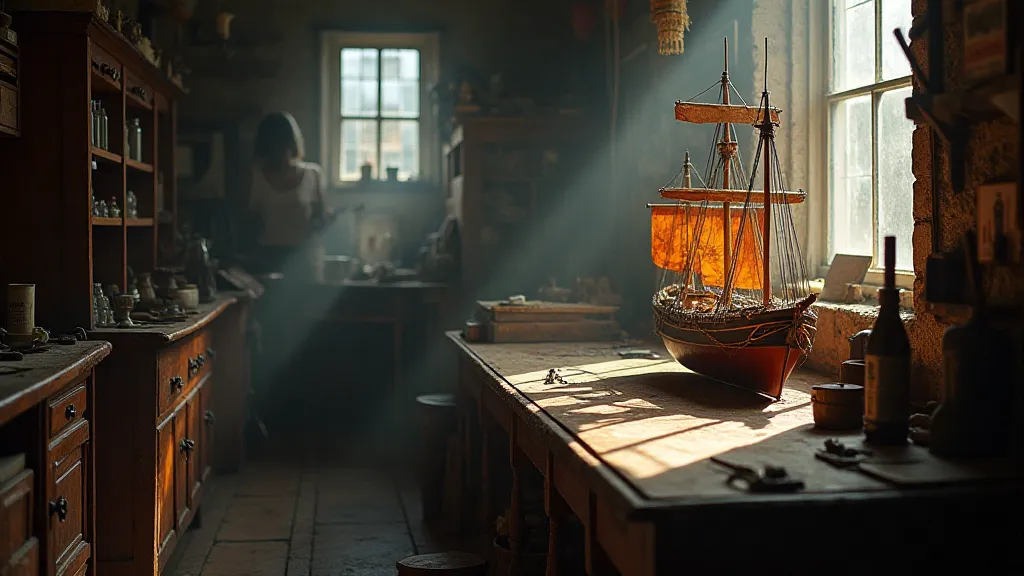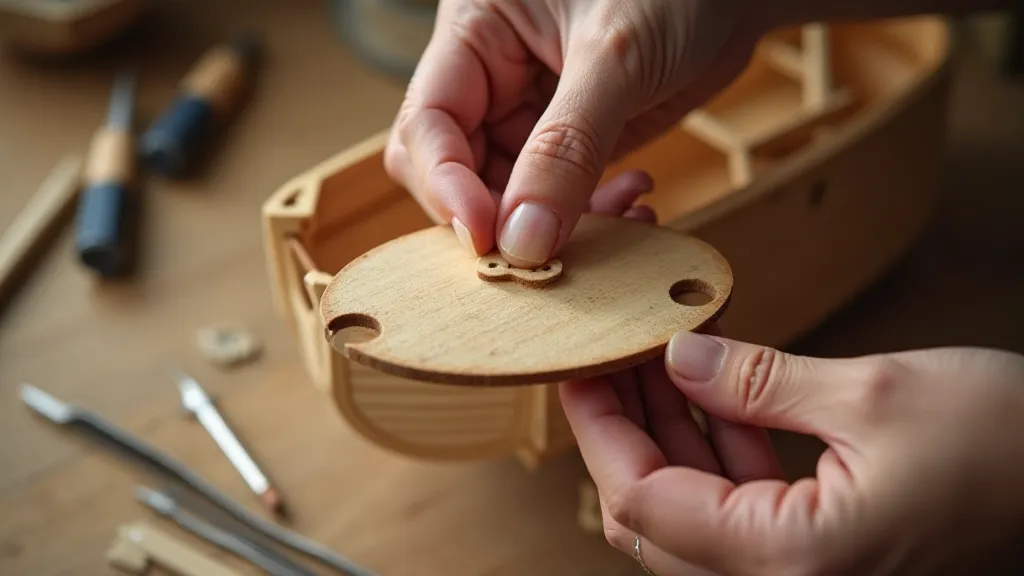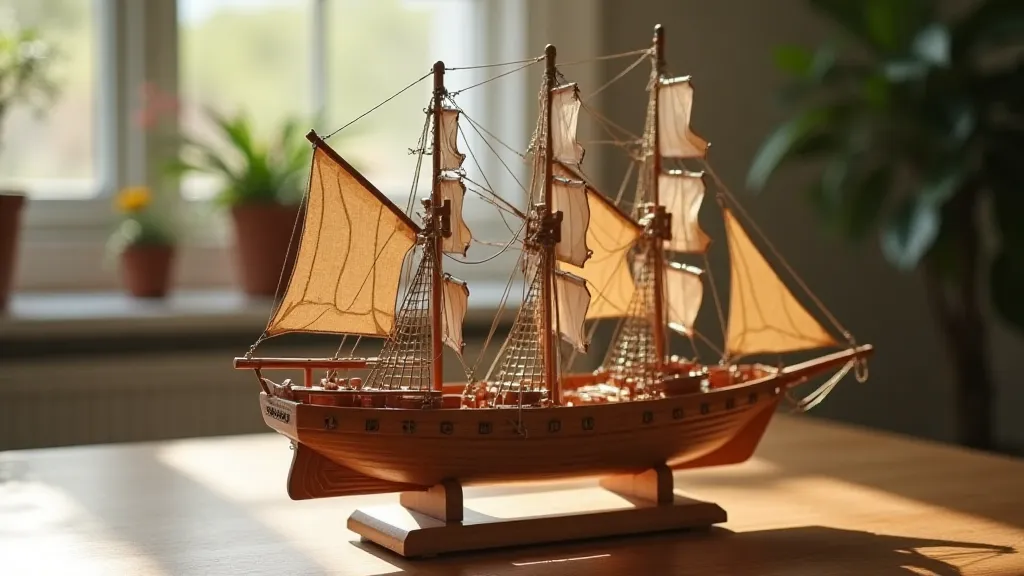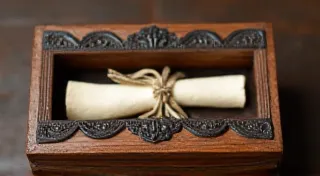The Mariner’s Respite: Finding Solace in the Miniature World
The relentless tide of modern life – the deadlines, the demands, the digital deluge – can feel overwhelming. We're perpetually connected, perpetually striving, perpetually… stressed. But what if there was a way to navigate that chaos, to find an island of tranquility amidst the storm? For many, that refuge lies in the meticulous, meditative process of building wooden model ships.
It's more than just a hobby; it’s a journey back in time, a quiet rebellion against the frenetic pace of the present. The scent of cedar and mahogany, the feel of finely carved timbers in your hands, the gradual emergence of a magnificent vessel from a pile of raw materials - these are experiences that soothe the soul and reconnect us to a more deliberate, purposeful existence.
I stumbled into this world by accident. Years ago, facing a particularly brutal period of burnout, I found myself drawn to an antique shop, seeking… something. I don’t even remember what I was looking for. But there, nestled amongst chipped china and faded photographs, was a half-finished model of the Martha, an 18th-century Bristol merchant ship. The craftsmanship was breathtaking, even incomplete. Something about its stoic presence resonated with me, a quiet strength that felt utterly lacking in my own life.

A History Etched in Timber
Model ship building isn’t a new pursuit. Navies have long used scale models for training, planning, and demonstrating naval power. But the tradition of civilian model building, often driven by a deep love of maritime history and a desire to preserve the memory of iconic vessels, stretches back centuries. Victorian gentlemen, particularly those with seafaring backgrounds or romanticized notions of naval adventure, often indulged in this art. These weren't just toys; they were testaments to skill, patience, and a profound respect for the ships that shaped our world.
Consider the Cutty Sark, a clipper ship renowned for its speed and elegance. Replicating its graceful lines in miniature isn't just about following a set of plans; it’s about understanding the engineering prowess, the ingenuity of the shipwrights, and the vital role the ship played in the tea trade between Britain and the Far East. Each tiny plank, each meticulously crafted piece of rigging, becomes a tangible link to that history.
The Therapy of Tiny Details
The process itself is inherently therapeutic. It demands focus, concentration, and a willingness to embrace the slow, deliberate pace. There’s no room for distractions when you’re carefully shaping a hull plank or painstakingly tying a knot. The modern world rewards speed and efficiency; model ship building demands the opposite. This deliberate slowing down, this immersion in a world of miniature precision, allows the mind to quiet down, to shed the anxieties and pressures of everyday life.
It’s a form of mindful meditation. The repetitive motions – sanding, gluing, filing – become almost hypnotic, a way to enter a state of flow where time seems to dissolve. You're not thinking about deadlines or emails; you’re simply focused on the task at hand, on bringing a tiny piece of history to life. It's an engagement that occupies your mind just enough to prevent rumination, but not so much that it becomes a source of stress.
The challenges, too, can be strangely rewarding. A miscut plank, a broken mast – these setbacks require problem-solving, adaptation, and a healthy dose of perseverance. It’s a lesson in resilience, a reminder that even in the face of adversity, there’s always a way forward. And the satisfaction of overcoming those challenges, of seeing the ship slowly but surely take shape, is immensely gratifying.

Beyond the Plans: Craftsmanship and Restoration
While detailed plans are a crucial starting point, true mastery of wooden model ship building extends beyond simply following instructions. It requires an understanding of wood grain, the behavior of glue, the principles of naval architecture. It’s about developing a craftsman’s eye, a feel for what looks right, what feels authentic.
For those drawn to the history and artistry, restoration of older models can be a particularly rewarding pursuit. Imagine rescuing a forgotten masterpiece, piecing together a fragmented legacy. This involves careful research to understand the ship’s original appearance, the techniques used in its construction, and the historical context in which it was built. It's like being a detective, uncovering clues from the past, and bringing a piece of history back to its former glory.
Collecting antique model ships is another avenue of appreciation. The value isn't just in the rarity or the provenance; it’s in the artistry, the craftsmanship, the historical significance. A well-preserved model can offer a fascinating glimpse into the passions and skills of a bygone era.
A note of caution: the restoration process is delicate and requires patience, skill, and the right tools. Improper techniques can easily damage the model, diminishing its value and historical integrity. Thorough research and, if possible, guidance from an experienced restorer are essential.
A Legacy in Miniature
Building wooden model ships isn’t just a hobby; it’s a connection to history, a refuge from the pressures of modern life, and a pathway to personal growth. It's an act of creation, a testament to human ingenuity and perseverance. The finished model, however small, represents hours of dedication, a tangible piece of artistry that can be admired and cherished for generations.
I still have that half-finished Martha. I completed it, of course, slowly, meticulously, finding solace and purpose in each step of the process. Now, it sits on my desk, a constant reminder of the importance of slowing down, focusing on the present, and finding beauty in the details. It's a mariner's respite, a miniature world where peace and tranquility prevail.






